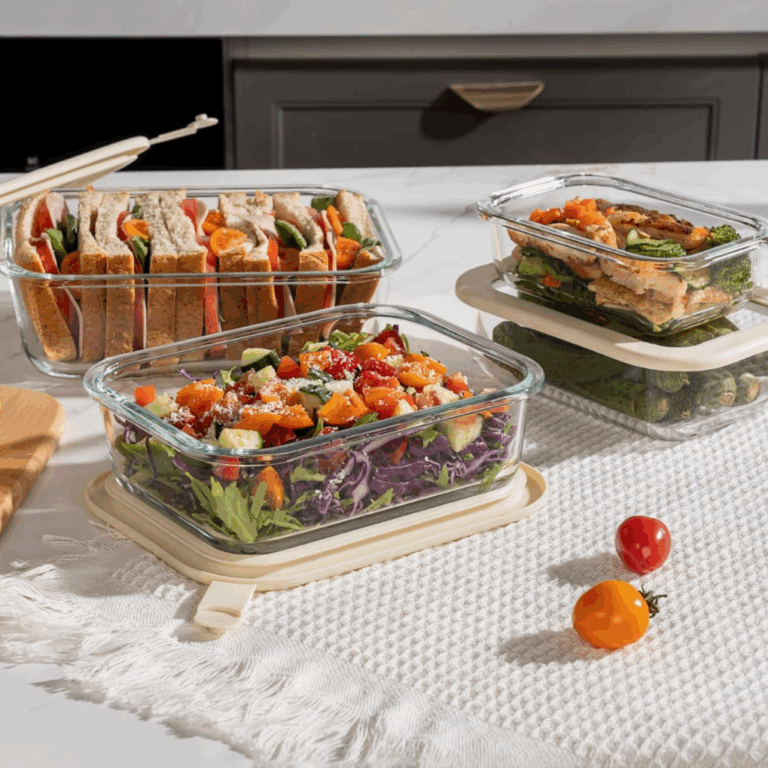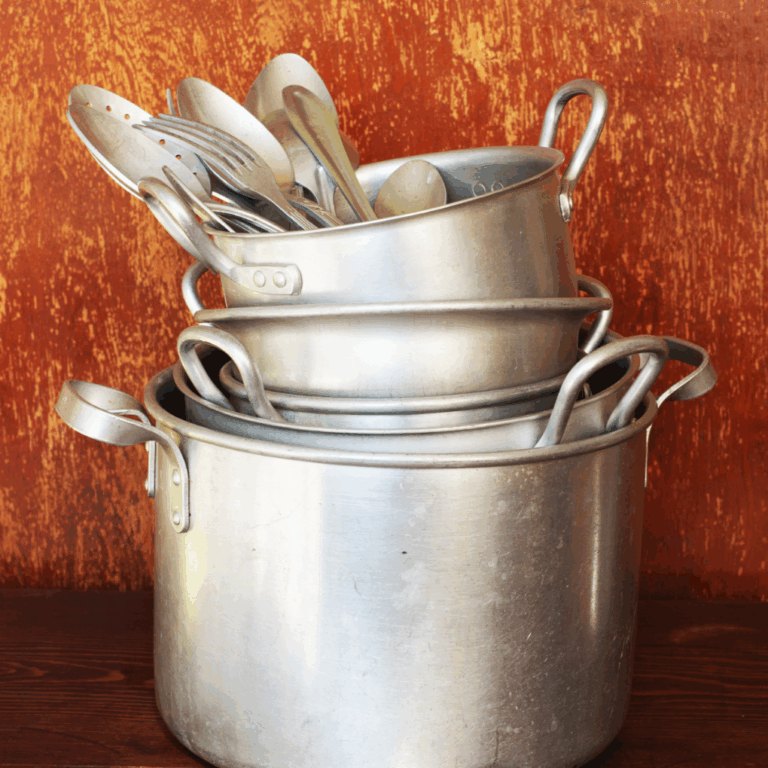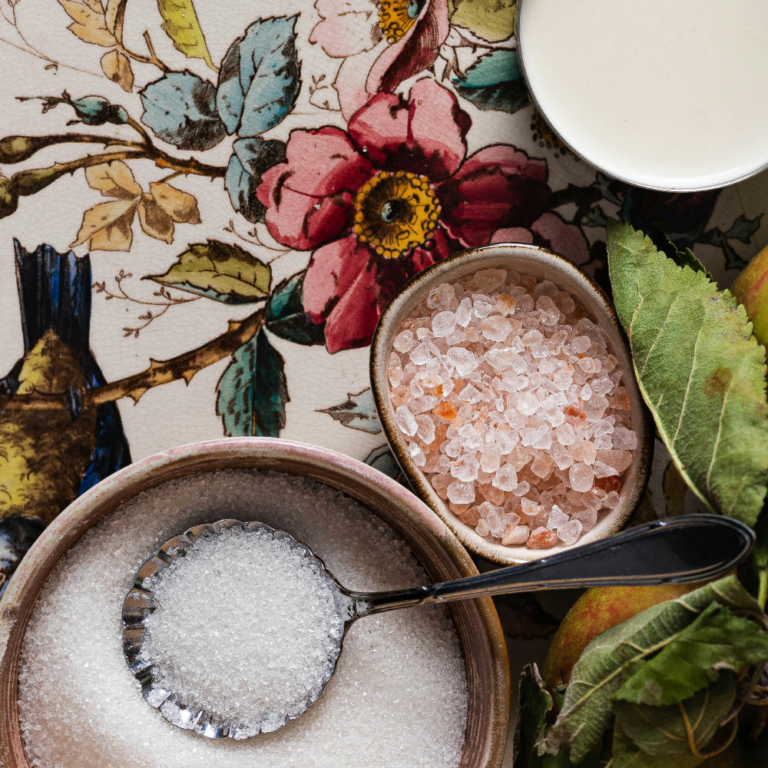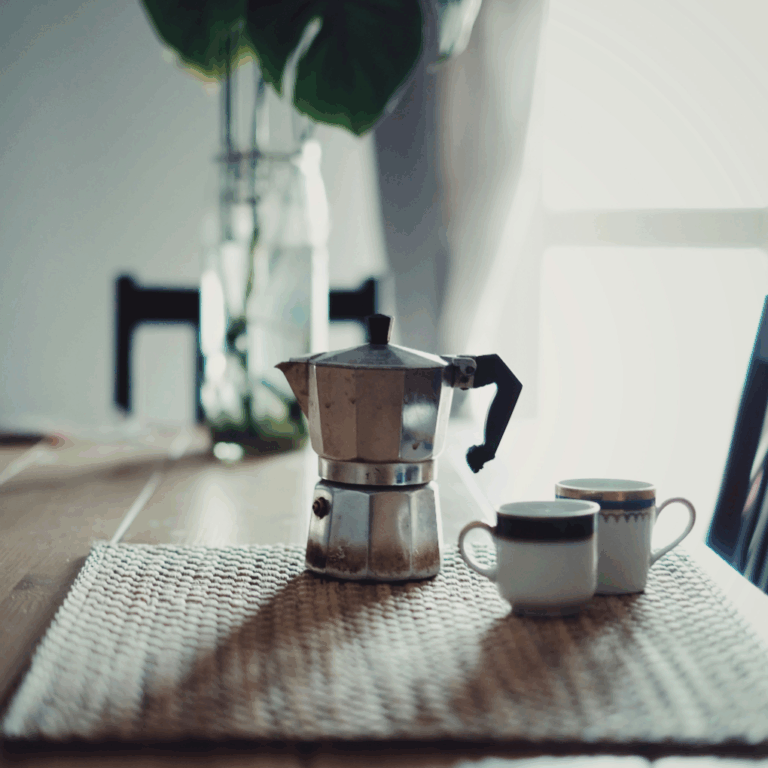
Key Takeaways
- Mold free coffee means coffee that has been tested to ensure low or non-detectable levels of mold and mycotoxins, including Aflatoxin B1 and Ochratoxin A.
- Quality farming, careful processing, and proper storage all play a key role in preventing mold contamination in coffee beans.
- Brands that use third-party lab testing and share transparent results offer the most trustworthy mold free coffee options.
If you’re like me, coffee isn’t just a drink…it’s a ritual. And as someone living in Seattle (coffee capital of the U.S. and, yes, the birthplace of Starbucks), I take my morning cup pretty seriously.
More people are seeking mold-free coffee, especially if they’ve heard about mycotoxins or have health concerns like headaches, fatigue, or gut issues. It’s not about fear; it’s about wanting a cleaner, better-quality brew you can feel good about drinking every day.
In this guide, we’ll break down what mold-free coffee actually means, how mold ends up in coffee beans in the first place, what to look for when choosing a cleaner brand, and smart tips to keep your coffee tasting its best long after you bring it home.
Why Mold and Mycotoxins Are a Concern in Coffee
Mold can grow naturally on many crops, including coffee beans, especially in warm, humid environments. When certain types of mold grow, they can produce toxins called mycotoxins. These toxins don’t always go away during roasting, which is why some people pay closer attention to the quality and testing behind their coffee.
What are mold and mycotoxins?
Mold is a type of fungus that thrives in moisture. Mycotoxins are chemical byproducts produced by some molds. Two that are most commonly discussed in coffee are:
- Aflatoxin B1: Certain Aspergillus molds produce aflatoxin B1. It’s considered one of the more harmful mycotoxins because studies have linked high, long-term exposure to liver stress. In coffee, Aflatoxin B1 usually develops when beans are grown or stored in damp, warm environments. While roasting reduces some of it, it does not eliminate all traces, which is why testing matters.
- Ochratoxin A (OTA): Is another common mycotoxin found in foods like coffee, grains, spices, and dried fruit. Both Aspergillus and Penicillium molds produce it. OTA is known to be heat-stable, meaning roasting temperatures don’t destroy it. Some research has linked higher exposure levels to kidney stress and immune effects, though most coffee on the market contains low amounts.
Why do they matter?
High levels of these toxins may contribute to issues like:
- Headaches
- Gut discomfort
- Fatigue
- Immune stress
Some countries have strict limits on mycotoxins in food, but the standards aren’t always consistent, and not all coffee is tested during production.
fact check
How Common Are Mycotoxins in Coffee?
A large 2024 meta-analysis reviewed 3,256 coffee samples from around the world and found that 54.6% tested positive for Ochratoxin A (OTA) at some level. Contamination rates varied across countries; some countries reported about 7.5% positivity, while others reached nearly 100%, depending on farming conditions, processing, and storage practices.
How Mold Gets Into Coffee
Coffee doesn’t “start” with mold. Contamination can happen at several points along the way — from the moment the beans are grown to the time they’re roasted and packaged. Because coffee is produced in warm, humid regions, the risk of mold is always there unless farmers and processors follow careful handling and drying practices.
- Growing Stage: Coffee grows in warm, humid climates. If the beans stay wet for too long or the plants experience weather stress, mold can begin forming before harvest.
- Harvesting: Large-batch harvesting can mix in overripe or damaged fruit, which can introduce mold. Careful hand-picking and sorting reduce this risk.
- Processing: Mold growth happens when beans aren’t dried quickly, are dried on the ground, get rained on during drying, or when fermentation tanks aren’t cleaned properly. Damp beans are the most significant contributor to mold and mycotoxin formation.
- Storage: Beans can sit for weeks or months before roasting. Mold may grow if they’re stored in humid warehouses, poorly ventilated spaces, or in bags that absorb moisture.
- Shipping: Long-distance shipping can expose beans to moisture or condensation if containers aren’t climate-controlled, increasing the risk of mold.
- Roasting: Roasting kills active mold, but mycotoxins can survive. So contamination that happens earlier in the process may remain in the final product.
✨ now you know
The Cherry on Top
Coffee beans come from a fruit called a coffee cherry, and when it’s ripe, it’s sweet enough to snack on! In some regions, the pulp is brewed into a tea called cascara, which tastes like a fruity cousin of coffee. So yes, your morning brew has a juicy backstory! 🍒
What Makes Coffee Mold Free?
“Mold-free coffee” doesn’t mean coffee that has never touched moisture. It means the beans have been handled, processed, and tested in ways that significantly reduce the risk of mold or mycotoxins.
Here’s what typically separates cleaner, low-mycotoxin coffee from the rest.
| What to Look For | Why It Matters | How It Reduces Mold/Mycotoxins |
|---|---|---|
| Third-Party Lab Testing | Independent tests for Aflatoxin B1, Ochratoxin A, and moisture levels. | Confirms low or non-detectable mycotoxin levels; most reliable indicator. |
| USDA Organic | Better farming and handling standards. | Reduces risk of mold growth from poor storage or pesticide-damaged crops. |
| Specialty-Grade Beans | High-quality beans with strict sorting standards. | Fewer defective or damaged beans, which mold more easily. |
| High-Altitude Farms | Cooler climates with lower humidity. | Less moisture = reduced mold risk during growth and drying. |
| Wet (Washed) Processing | Cleaner, more controlled method than natural/dry processing. | Cuts down on beans sitting too long in warm conditions. |
| Proper Drying & Storage | Beans dried quickly and stored in ventilated spaces. | Prevents mold from forming during transport and storage. |
| Transparent Brands | Brands that share test results and sourcing details. | Gives you proof of quality, not just marketing claims. |
How to Choose a Mold Free Coffee
Choosing a mold-free coffee is easier than it sounds. Once you know the key signs of quality, it becomes much simpler to spot better beans anywhere you shop.
1. Look for Brands That Share Testing Information
Brands committed to cleaner coffee usually publish how they test, what they test for, and who performs the testing. Even a simple statement about regular third-party screening shows the brand is paying attention to quality. If a company makes bold claims but offers no specifics, that’s usually a sign they don’t test.
2. Choose Whole Bean When Possible
Whole beans stay fresh longer because they’re less exposed to air and moisture. This helps protect flavor and reduces storage-related risks. Pre-ground coffee isn’t “bad,” but if mold-free coffee is your priority, whole bean gives you more control.
3. Prefer Single-Origin or Specialty Coffee
Single-origin coffee comes from a single region or farm, meaning you’re getting beans processed under consistent conditions. Specialty-grade coffee is also carefully sorted, removing defective beans that are more likely to develop mold or carry mycotoxins. These coffees tend to come from farms that meet higher overall standards.
4. Be More Selective With Decaf and Instant
Decaf beans go through extra steps that can increase handling risks, so it helps to pick brands that test their decaf specifically. Instant coffee is often made from lower-grade beans, which may have been stored longer. If you drink decaf or instant regularly, choose brands that explain how they verify purity.
5. Look for Simple Signs of Quality
A few markers can quietly tell you a lot about how the beans were handled:
- USDA Organic (better farming and storage practices)
- Wet/washed processing (cleaner, more controlled method)
- High-altitude farms (cooler climates reduce moisture)
- Resealable, airtight packaging (protects beans after roasting)
👉 Certifications to Know When Shopping for Cleaner Coffee
Not all certifications guarantee mold-free coffee, but many of them provide valuable insights into the growing conditions, processing methods, and handling practices behind the beans. If you want a deeper look at the labels on coffee bags and what each one actually means, here’s a simple breakdown.
- USDA Organic: Indicates organic farming practices with strict rules around chemicals, soil health, and handling. While it doesn’t test for mold or mycotoxins, the standards help reduce conditions that lead to contamination.
- Canada Organic / CCOF Organic: Uses criteria similar to USDA Organic. Does not include mold testing but supports cleaner farming and storage standards.
- Demeter Biodynamic: A step beyond organic, focusing on soil quality, biodiversity, and ecological balance. It doesn’t include mycotoxin testing but often signals higher-quality, well-managed farms.
- Ecocert: A widely used international certification for organic and sustainable production. Improves environmental and handling practices, thereby indirectly reducing mold risks.
- Fair Trade Certified: Ensures ethical labor standards and more structured farm systems. While not tied to mycotoxin testing, cleaner processing environments support better-quality beans.
- Rainforest Alliance Certified: Focuses on sustainability, biodiversity, and responsible land management. Certified farms typically use cleaner drying and storage practices.
- Specialty Grade Coffee (SCA): Beans must meet strict quality standards and have very few defects. Fewer defective beans means a lower risk of mold or mycotoxin development.
- Third-Party Lab Testing / COA (Certificate of Analysis): Brands may publish independent test results for Aflatoxin B1, Ochratoxin A, moisture levels, and more. This is the only method that directly confirms the presence of low or non-detectable levels of mycotoxins.
Top Mold Free Coffee Brands
If you’re trying to upgrade your coffee routine, these brands are a great place to start. They all put extra care into how their beans are grown, processed, and tested, just in different ways. Some test every batch, others source from high-altitude farms, and many focus on organic, shade-grown, or regenerative practices.
Below, you’ll find a quick breakdown of what makes each brand unique so you can find the one that fits your lifestyle (and your morning cup) perfectly.
ℹ️ Note: Certifications and farming practices can vary from product to product within a brand’s lineup. Always double-check the specific roast or flavor you’re buying to make sure it meets the standards you’re looking for.
1. Fabula
$19-25

Fabula Coffee is known for being clean, low-acid, and easy to drink. Their beans come from small, high-altitude farms, where cooler temperatures naturally help reduce moisture and lower the chances of mold.
Everything is USDA Organic, Non-GMO, and tested for more than 350+ contaminants, including mold, mycotoxins, pesticides, and heavy metals.
The brand focuses on freshness by roasting several times a week and shipping quickly, ensuring the coffee arrives at peak flavor. Fabula offers a variety of options, from light to dark roasts, flavored coffees, decaf, and even K-pods, making it easy to find something that fits your routine.
They also offer a 30-day money-back guarantee, which is helpful if you’re trying their coffee for the first time.
- Sourced From: High-altitude organic farms in Latin America
- Certifications: USDA Organic, Non-GMO
2. Purity
$23-29
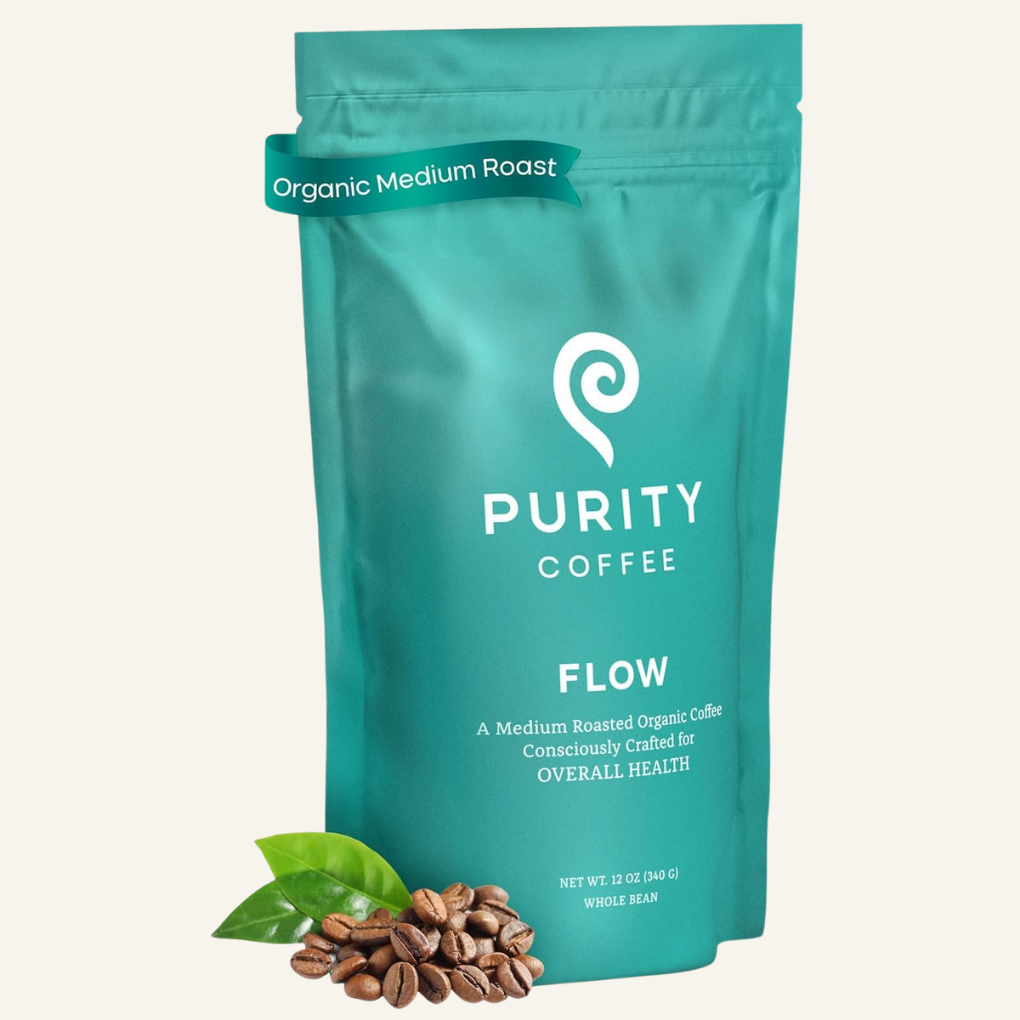
Purity Coffee is built around making coffee that’s clean, transparent, and crafted with health in mind.
Every batch is third-party tested for mold, mycotoxins, pesticides, and other contaminants, and the results are published so you know exactly what you’re getting.
Their beans are USDA Organic and specialty-grade, meaning they come from farms that meet high standards for quality and handling.
Purity also pays attention to freshness. Their coffee is roasted in small batches and packed in nitrogen-flushed bags, which helps protect antioxidants and keep the flavor bright for longer.
- Sourced From: Organic, high-altitude farms in Central & South America
- Certifications: USDA Organic, Bird Friendly® (Select products), Demeter Certified Biodynamic, Certified B Corporation
3. Lifeboost
$18-30
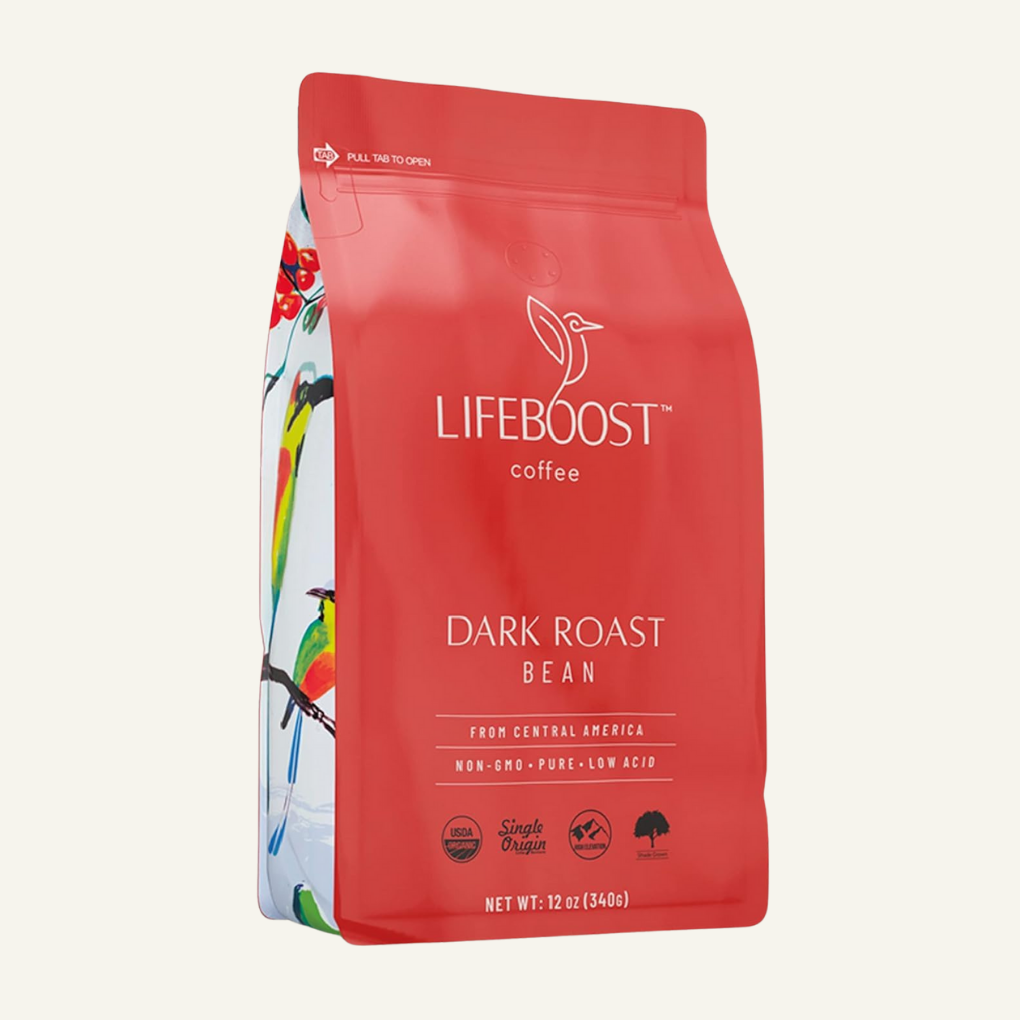
Lifeboost Coffee is a clean, low-acid coffee brand known for its health-focused approach. All of their beans are single origin, USDA Organic, and grown at high altitudes in Central America, where cooler climates naturally support better-quality coffee.
Every batch is third-party tested for mold, mycotoxins, pesticides, and other toxins to make sure the final cup is as pure as possible.
Their coffee is smooth, stomach-friendly, and available in several roasts and flavored options. If you’re looking for a clean coffee that’s gentle and thoroughly tested, Lifeboost is a solid choice.
- Sourced From: Single-origin, high-altitude farms in Central America
- Certifications: USDA Organic, Non-GMO
4. Kion Coffee
$30
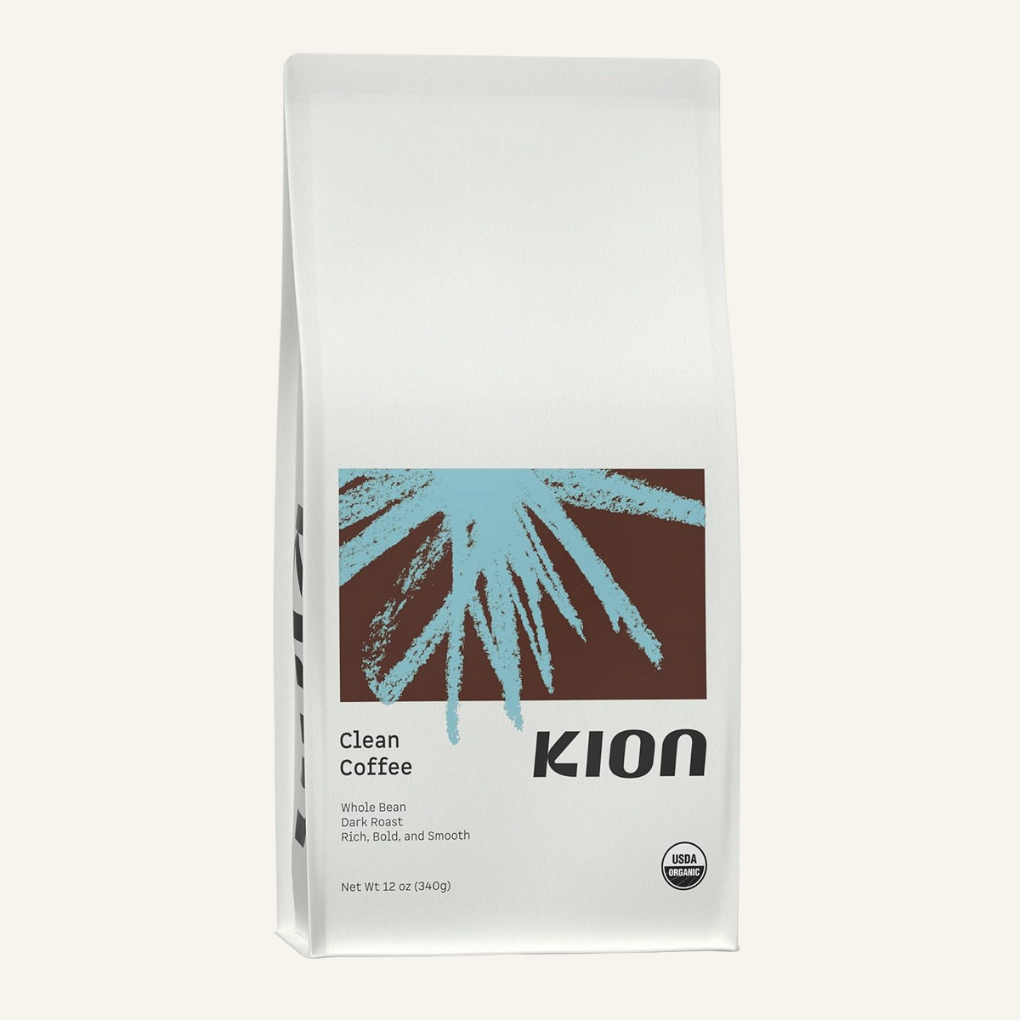
Kion Coffee is an excellent choice if you want a clean, high-quality cup from a brand that puts a lot of care into its sourcing and roasting.
Their beans come from high-altitude farms in Honduras, where cooler mountain climates help produce dense, nutrient-rich cherries. Everything is USDA Organic, so the beans are grown without synthetic pesticides or chemical inputs.
Kion roasts its coffee in Boulder, Colorado, keeping production small, intentional, and quality-focused. Their roasting approach brings out a rich, smooth flavor without bitterness, and because the beans are single origin, you get a consistent, traceable cup every time.
- Sourced From: High-altitude, single-source in Honduras
- Certifications: USDA Organic
5. Natural Force
$28

Natural Force is a straightforward, wellness-focused coffee brand that prioritizes clean ingredients and transparent production. Their beans come from high-altitude farms (often referenced as Colombia in their materials), where cooler mountain climates help support healthier coffee plants.
Everything is USDA Organic, Non-GMO, and Vegan, so the beans are grown without synthetic pesticides or chemical additives.
A key part of the brand’s identity is its commitment to third-party testing. Natural Force highlights screenings for mold, mycotoxins, pesticides, and heavy metals, which adds reassurance for anyone looking for a cleaner daily coffee.
- Sourced From: Columbia
- Certifications: USDA Organic; Non-GMO, Vegan, Rainforest Alliance
7. Clean Coffee Co.
$22
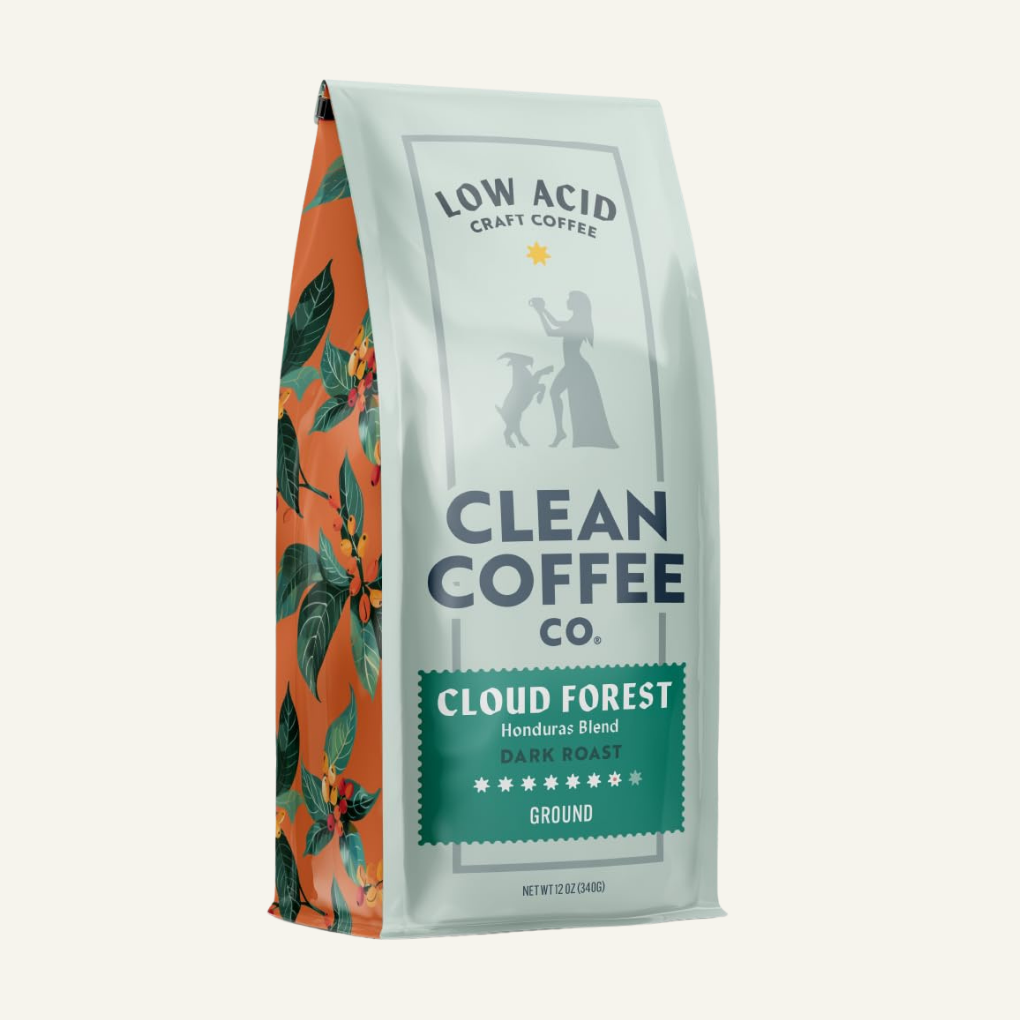
Clean Coffee Co. focuses on simplicity, transparency, and high-altitude sourcing to produce a consistently clean cup. Their beans come from high-altitude growing regions, with Papua New Guinea among their most featured origins, where cooler mountain climates naturally support healthier coffee plants.
While they don’t list formal certifications like USDA Organic or Fairtrade, the brand instead emphasizes rigorous lab testing as its leading quality standard.
One thing that sets Clean Coffee Co. apart is the scope of its testing. They screen for over 150 contaminants, including mold, mycotoxins, pesticides, and other residues.
- Sourced From: Central America, varies by product
- Certifications: Rainforest Alliance
8. Bulletproof
$15-32
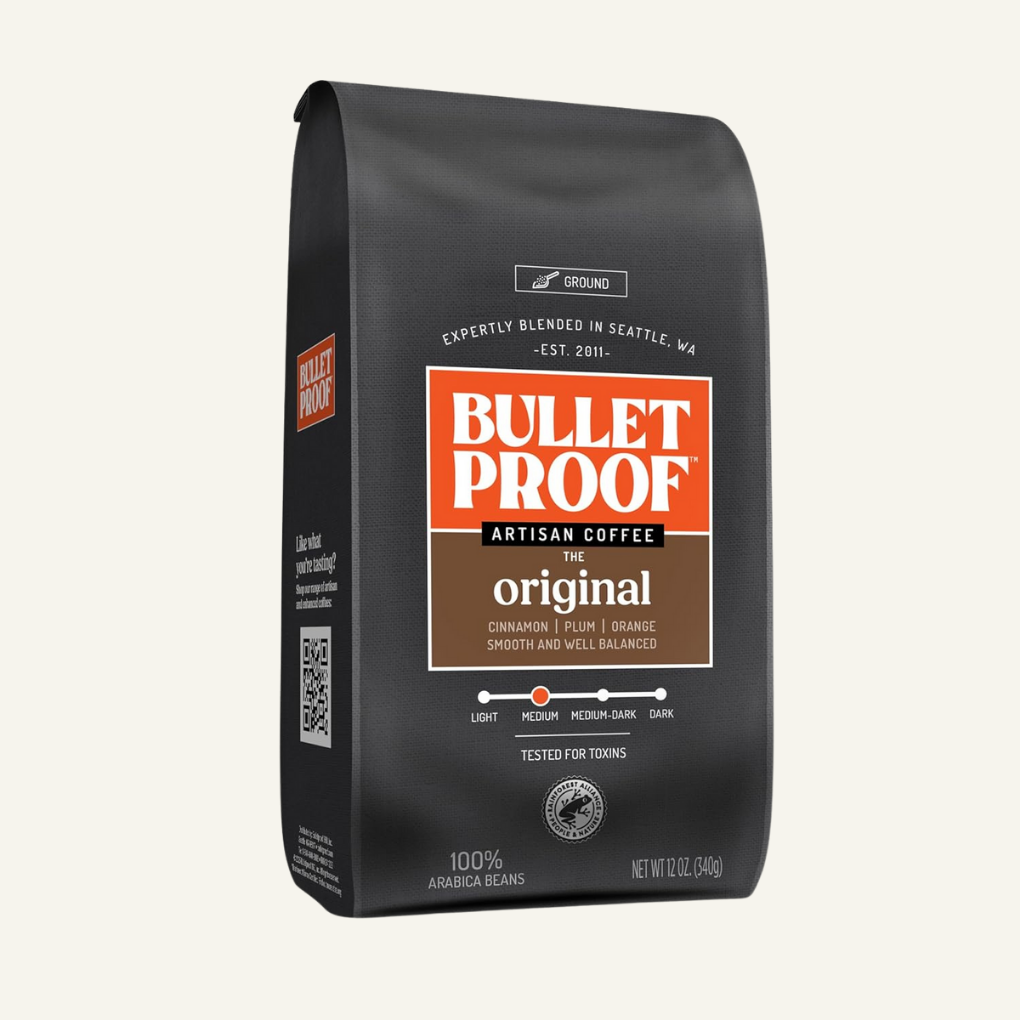
Bulletproof Coffee is one of the original brands to bring “clean coffee” into the mainstream. Their beans come from small farms in Central and South America, primarily Guatemala, where higher elevations and cooler temperatures help naturally support healthier, slower-grown coffee cherries.
Bulletproof sources exclusively Arabica beans, which tend to be lower in bitterness and generally less prone to mold than Robusta varieties.
The brand is known for its focus on testing and consistency. Bulletproof works with Rainforest Alliance Certified farms and screens its beans to help ensure they meet the company’s quality and cleanliness standards.
- Sourced From: Small farms in Central & South America
- Certifications: Rainforest Alliance
9. Thompson’s Healthy Bean
$25
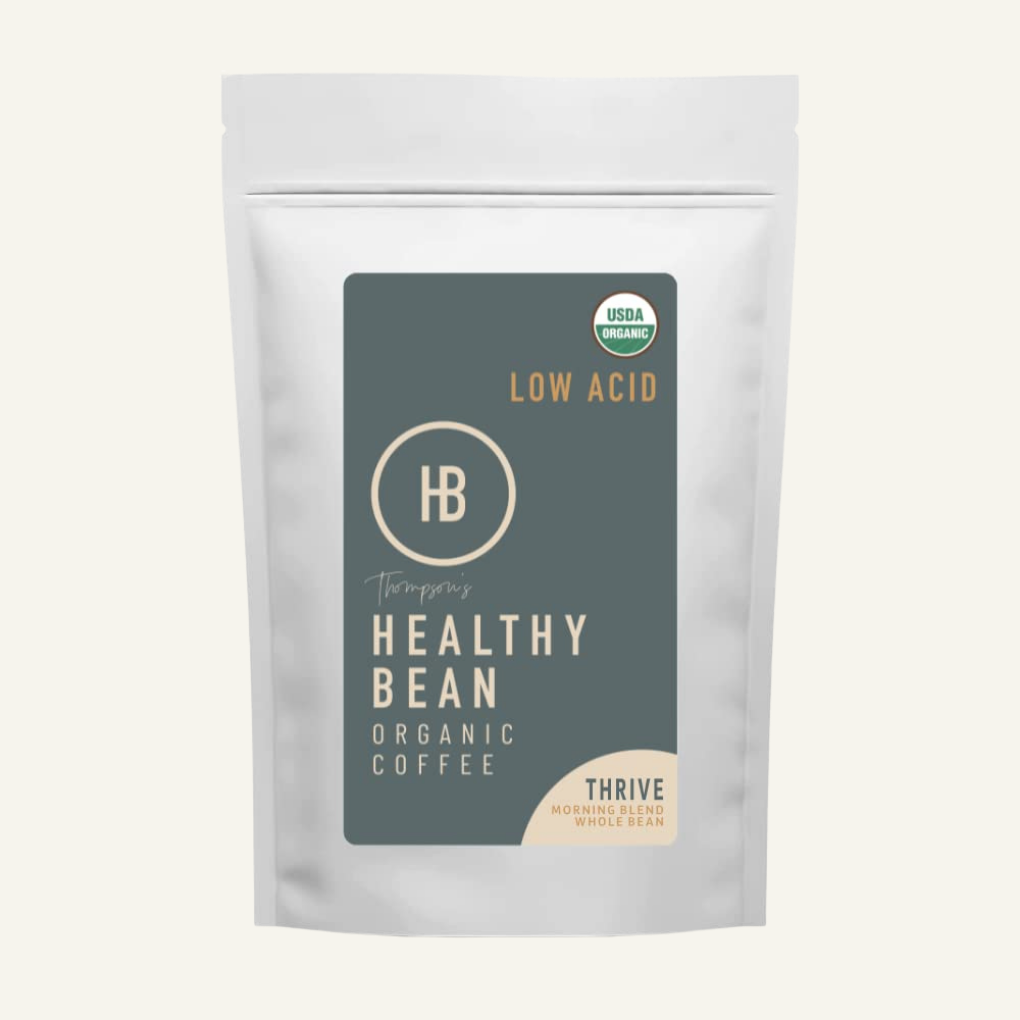
Healthy Bean Coffee is a great choice if you want something gentle, clean, and still genuinely flavorful. Their high-altitude beans come from Guatemala’s Western Highlands, where cooler temps and rich volcanic soil naturally support cleaner, mold-resistant coffee.
Everything is USDA Organic, so the beans are grown without synthetic pesticides and follow strict organic standards. The brand also focuses heavily on purity, claiming to test for mold, mycotoxins, heavy metals, and yeast.
Their coffee is naturally low acid, which can be a big plus for anyone with stomach sensitivity. Healthy Bean also offers unique “superfood-infused” blends—like matcha or rooibos—that add a functional twist without overpowering the flavor.
- Sourced From: High-altitude Arabica farms in Guatemala’s Western Highlands
- Certifications: USDA Organic
9. Kicking Horse
$10-26

Kicking Horse Coffee is a longtime favorite for people who want bold flavor and responsibly sourced beans without any unnecessary additives.
The brand sources its Arabica beans from a variety of high-quality organic farms across regions like Peru, Colombia, Sumatra, East Timor, Uganda, Guatemala, and Nicaragua. These areas are known for rich soil, high elevations, and diverse microclimates, all factors that help produce cleaner, better-tasting coffee.
Every Kicking Horse blend is 100% Organic and 100% Fairtrade certified, which means their beans are grown without synthetic pesticides and support fair, ethical labor practices. The brand is also known for its strong roasting game; it roasts in the Canadian Rockies and is known for rich, full-bodied flavors with a smooth finish.
- Sourced From: Multiple organic farms across Central & South America, Africa, and Asia.
- Certifications: ECOCERT Organic, Fairtrade (FLOCERT)
10. Equal Exchange
$15-31
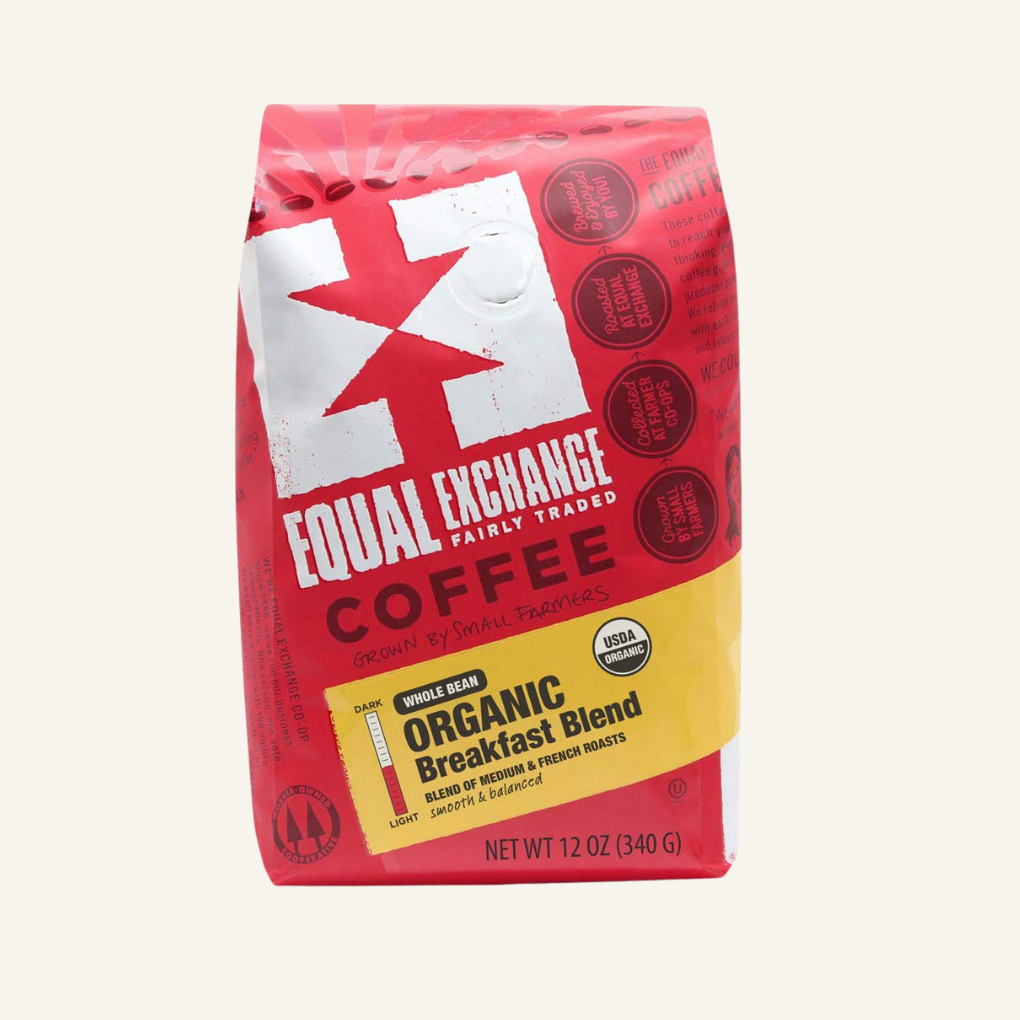
Equal Exchange is one of the most well-known ethical coffee brands, built on relationships with small farmer cooperatives and long-term Fairtrade partnerships.
Their beans come from farmer-owned co-ops across Latin America, Africa, and Asia, where coffee is grown at higher elevations using traditional, shade-grown methods that naturally support healthier plants and richer soil. This type of farming tends to avoid many of the industrial practices that can introduce contaminants.
All of Equal Exchange’s coffee is USDA Organic and 100% Fairtrade Certified, meaning the beans are grown without synthetic pesticides and that farmers receive fair, stable prices.
- Sourced From: Farmer cooperatives in Latin America, Africa, and Asia
- Certifications: USDA Organic, Fairtrade Certified
Brewing and Storage Tips for Mold Free Coffee
Even the cleanest beans can lose quality once they’re in your kitchen. These small habits help protect freshness, flavor, and purity so your coffee stays at its best.
🛍️ Buy Smaller Amounts More Often
Coffee is most flavorful within a few weeks of roasting. Buying smaller bags means the beans don’t sit long enough to lose freshness or absorb extra moisture. This is especially helpful if you live in a humid climate.
🔒 Store Beans in an Airtight, Opaque Container
Air, light, and moisture are the enemies of fresh coffee. A sealed container made of ceramic, stainless steel, or UV-blocking glass keeps your beans protected and tasting their best.
It’s also worth skipping plastic containers. Plastic can let in more oxygen over time, absorb odors, and transfer them back into your beans. Some plastics can also degrade when heated or exposed to sunlight, which isn’t ideal for long-term food storage.
🌡️ Keep Coffee Away From Heat and Humidity
Storing beans near the stove, dishwasher, or a sunny window creates a warm, damp environment — perfect for condensation. A cool pantry or cabinet is ideal.
❄️ Be Careful With Freezing
Freezing can protect beans for long-term storage, but condensation becomes an issue when the container is opened and closed. If you freeze coffee, divide it into single-use portions so you only thaw what you need.
⚙️ Grind Right Before Brewing
Grinding exposes more surface area to air. Grinding only what you need keeps the rest of your beans protected and preserves both freshness and flavor.
🧼 Clean Your Coffee Gear Regularly
Old oils and buildup inside grinders or coffee makers can affect taste and quality. A quick rinse after each use and a deeper weekly clean keep your setup performing well and prevent stale flavors.
Don’t Miss: Best Plastic-Free Coffee Makers 2025 Choosing cleaner beans is one thing—brewing them in a coffee maker without hidden plastics is the next step. See our top picks for a safer, microplastic-free setup. Read more →Alternative Coffee Options
If you’re exploring coffee alternatives for health reasons or want to rotate away from your regular brew, several “clean” or “low-toxin” options still give you a warm morning ritual. These products vary widely in quality, so it helps to know what to look for.
Functional & Mushroom Coffee
Mushroom coffee blends — often made with functional mushrooms like reishi, lion’s mane, or chaga — have become popular for people wanting a gentler morning drink. Quality can vary widely, but the best options come from brands that clearly explain their sourcing practices and provide third-party testing.
I’ve tried a lot of alternatives myself, and Mud \ WTR has been one I’ve used on and off for the past year. It’s a smooth, easy-to-digest blend with a mild, coffee-esque flavor — not quite coffee, but close enough to scratch the itch when I want something other than a coffee.
When choosing a mushroom or functional blend, look for:
- Certified organic mushrooms (especially reishi, lion’s mane, and chaga)
- Simple ingredient lists with no fillers
- Third-party testing for purity and heavy metals
- Brands that explain their extraction methods (dual extraction is best for mushrooms)
Coffee Alternatives
If you want something completely coffee-free, there are plenty of cleaner substitutes that can still give you that cozy morning cup without caffeine or acidity.
Good options include:
- Herbal coffee substitutes such as chicory, dandelion root, or roasted barley
- Cacao-based blends for a richer, chocolatey flavor — I personally like the Paleovalley Bone Broth Protein Chocolate Powder. I know it sounds strange, but it actually tastes like a sugar-free hot chocolate and makes a great warm drink on days when I skip coffee.
- Adaptogenic blends that pair herbs and botanicals with superfood powders
- Organic instant alternatives made from single-origin or regenerative ingredients
Why “Clean Coffee” Is Becoming More Popular
More people want to know what’s actually in their morning cup. They’re looking for beans that are well-grown, properly dried, and tested for mold or mycotoxins—not just coffee that tastes good. As awareness grows, brands are responding with clearer sourcing practices, better processing, and greater transparency.
There’s also a wellness shift happening. The same people who check ingredients in their food or supplements are now doing the same with coffee, which has helped bring attention to mushroom blends, adaptogenic drinks, and low-toxin options. Sustainability also plays a role, with shoppers choosing coffees that align with organic or fair farming practices.
Don’t Miss: Microplastics — Health Risks, Sources, and How to Reduce Exposure Clean coffee is a great start, but it’s only one piece of the puzzle. Here’s a deeper look at how microplastics get into our food, water, and daily routines. Read more →FAQs on Mold-Free Coffee
No organic doesn’t automatically mean mold-free. Organic certification only tells you how the coffee was grown (no synthetic pesticides or fertilizers). Mold contamination usually occurs after beans are picked, during drying, storage, or shipping.
Humidity, slow drying, and poor storage practices can lead to mold growth even on the cleanest organic farms. If your goal is truly mold-free coffee, look for brands that test every batch and publish results or provide Certificates of Analysis.
Roasting kills mold spores, but mycotoxins are much more stubborn. They’re heat-stable compounds, meaning they can survive the high temperatures used during roasting.
So while roasting reduces mold levels, it doesn’t guarantee the coffee is free of mycotoxins like ochratoxin A or aflatoxin B1.
Decaf isn’t automatically higher in mold, but it can be more prone to contamination depending on how it’s processed. Decaffeination adds an extra moisture-heavy step, and if beans aren’t dried thoroughly afterward, mold can form more easily.
For cleaner decaf, look for:
Swiss Water Process (uses pure water, no chemicals)
USDA Organic
Brands that test for mold/mycotoxins
These three together dramatically reduce the risk of contamination, giving you a cleaner, smoother decaf.
Instant coffee can contain higher levels of mycotoxins compared to whole-bean coffee. This is mainly because instant coffee is often made from lower-grade beans and undergoes more processing steps, each of which adds another opportunity for moisture exposure or contamination.
Final Thoughts on Mold-Free Coffee
Coffee should make you feel good—not anxious about what might be hiding in your cup. When you choose cleaner, well-sourced, properly tested beans, you get the same comforting morning ritual… just without the unwanted extras.
Think of it as upgrading your daily brew. You still get the aroma, the warmth, the “don’t talk to me until I’ve had a sip” moment, but now you know the beans were grown with care, dried the right way, and checked for things you don’t want floating around in your mug.
